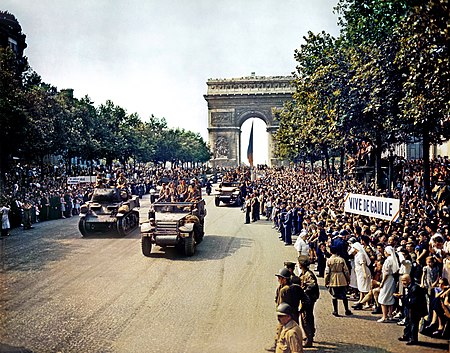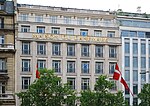Liberation of Paris

The liberation of Paris (French: libération de Paris) was a military battle that took place during World War II from 19 August 1944 until the German garrison surrendered the French capital on 25 August 1944. Paris had been occupied by Nazi Germany since the signing of the Armistice of 22 June 1940, after which the Wehrmacht occupied northern and western France. The liberation began when the French Forces of the Interior—the military structure of the French Resistance—staged an uprising against the German garrison upon the approach of the US Third Army, led by General George S. Patton. On the night of 24 August, elements of General Philippe Leclerc de Hauteclocque's 2nd French Armored Division made their way into Paris and arrived at the Hôtel de Ville shortly before midnight. The next morning, 25 August, the bulk of the 2nd Armored Division and US 4th Infantry Division and other allied units entered the city. Dietrich von Choltitz, commander of the German garrison and the military governor of Paris, surrendered to the French at the Hôtel Le Meurice, the newly established French headquarters. General Charles de Gaulle of the French Army arrived to assume control of the city as head of the Provisional Government of the French Republic.
Excerpt from the Wikipedia article Liberation of Paris (License: CC BY-SA 3.0, Authors, Images).Liberation of Paris
Paris 8th Arrondissement of Paris (Paris)
Geographical coordinates (GPS) Address Nearby Places Show on map
Geographical coordinates (GPS)
| Latitude | Longitude |
|---|---|
| N 48.8735 ° | E 2.29642 ° |
Address
75008 Paris, 8th Arrondissement of Paris (Paris)
Ile-de-France, France
Open on Google Maps











